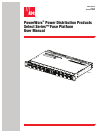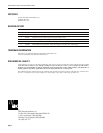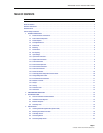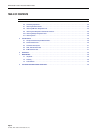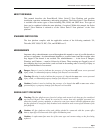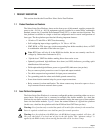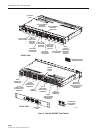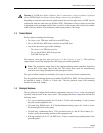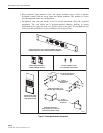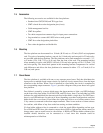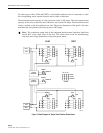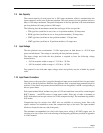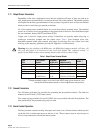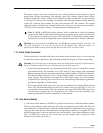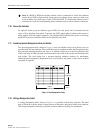
ADCP-80-526 • Issue 6 • December 2006
Page 3
© 2006, ADC Telecommunications, Inc.
Depending on customer order, the fuse platform may have one fuse type alone, or GMT fuses in
combination with one other fuse type (KLM or TPA). The number of fuse positions on each bus
is dependent on the maximum current limit, as well as on the current value of the fuses and the
width of the fuse holders. The maximum current input per bus is 100 Amps.
1.3 Product Options
Product options including the following:
• Two, four, or six TPA fuses with four or ten GMT fuses
• Two or four KLM or KTK fuses with four or ten GMT fuses
• Any of the above fuse types alone including:
– Two, four, or six TPA fuses per bus
– Two or four KLM or KTK fuses per bus
– Ten GMT fuses per bus
Fuse capacity varies per fuse type (see Section 1.8, Bus Capacity on page 7). The total fuse
output cannot exceed 100 Amps per bus (200 Amps per dual bus platform).
Two types of alarm contacts are available: wire wrap or screw-down barrier terminal strip.
Two fuse platform mounting options are available: EIA/WECO or ETSI. (All fuse platforms can
be installed in either a 19-inch or 23-inch rack. The fuse platform comes with mounting
brackets for both rack widths.)
1.4 Packaged Hardware
The fuse platform is shipped with hardware components (shown in Figure 2) that are packaged
separately and enclosed in the same carton. The packaged hardware components include the
following items:
• Two sets of mounting brackets (for 19-inch or 23-inch rack mounting)—Used to mount
the panel on the equipment rack.
• 5/16-inch long, Phillips drive, 8-32 flat-head thread-forming screws (8)—Used to secure
the mounting brackets to the panel.
• 3/8-inch long, combination drive, 12-24 pan-head screws (4) and #12 flat washers (4)—
Used to secure the mounting brackets to the equipment rack.
• #10 ring terminals (2) for 12–10 AWG wire—Used to connect the grounding cables to the
grounding studs.
Warning: If a KLM fuse holder without a fuse is connected to a load, an alarm is reported
(alarm red LED lights and alarm contacts change states, as in a fuse failure).
Note: The continuous output load of the equipment during normal operation should not
exceed 80% of the rated value of the fuse. This allows some room for manufacturing
tolerances and voltage fluctuations in the plant power mains.



